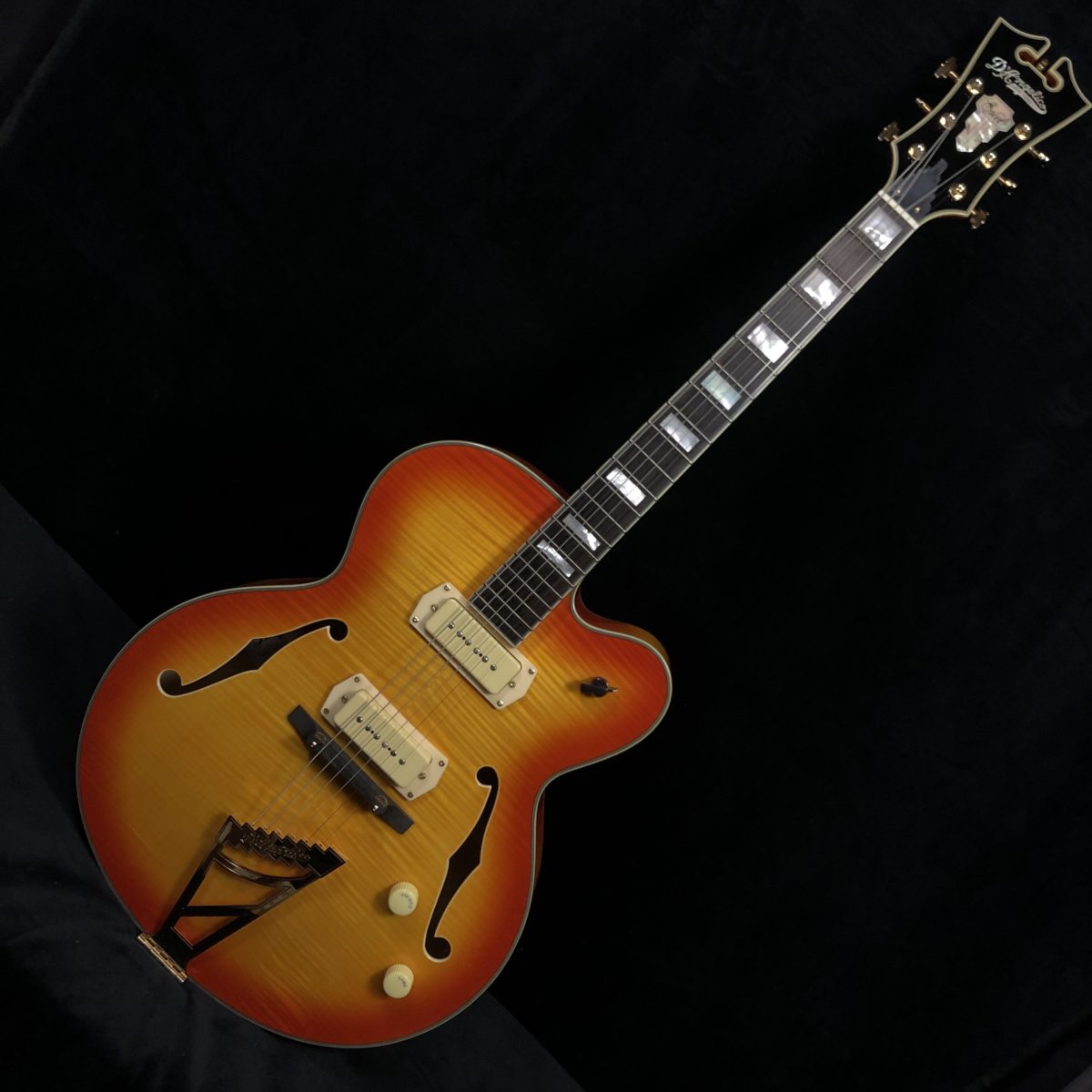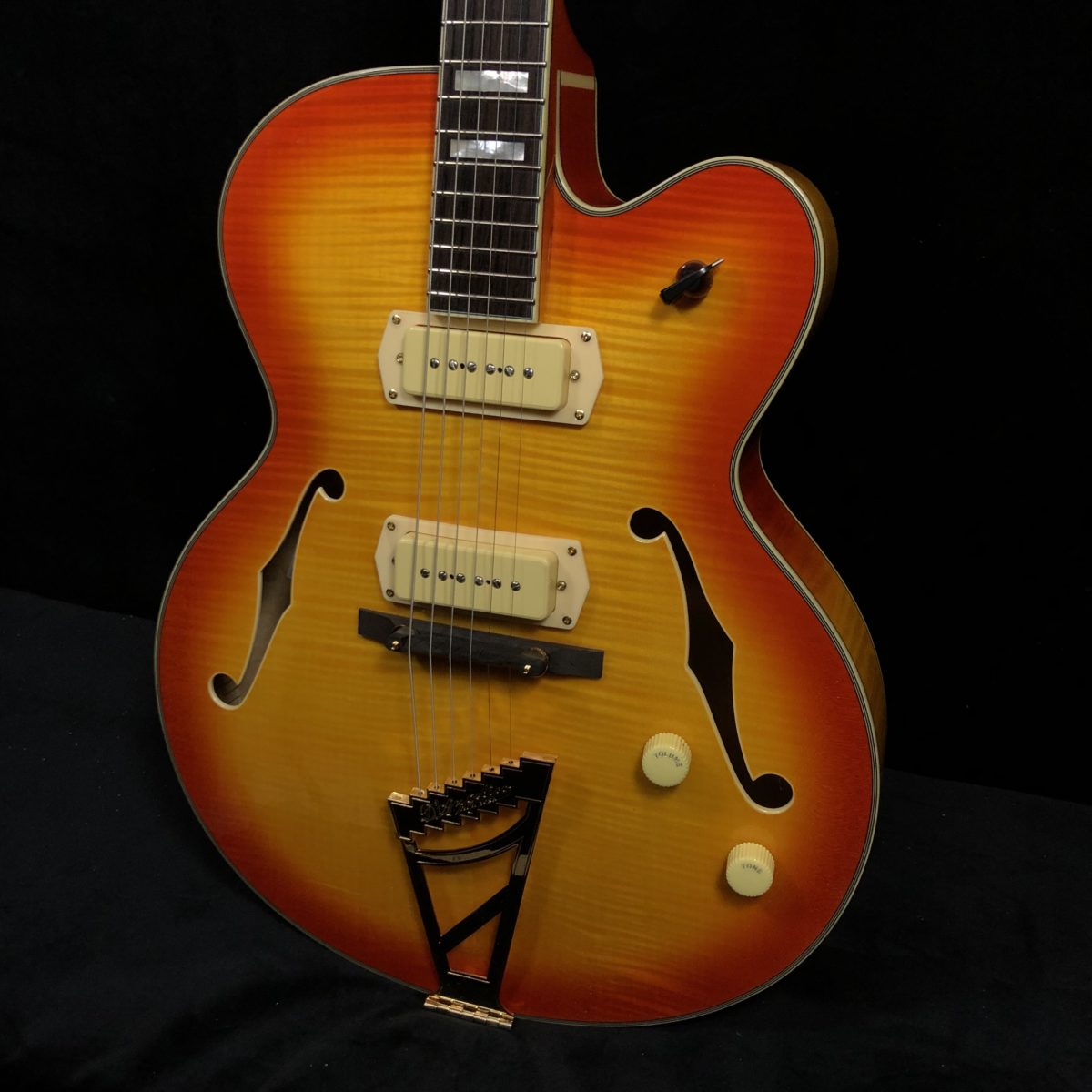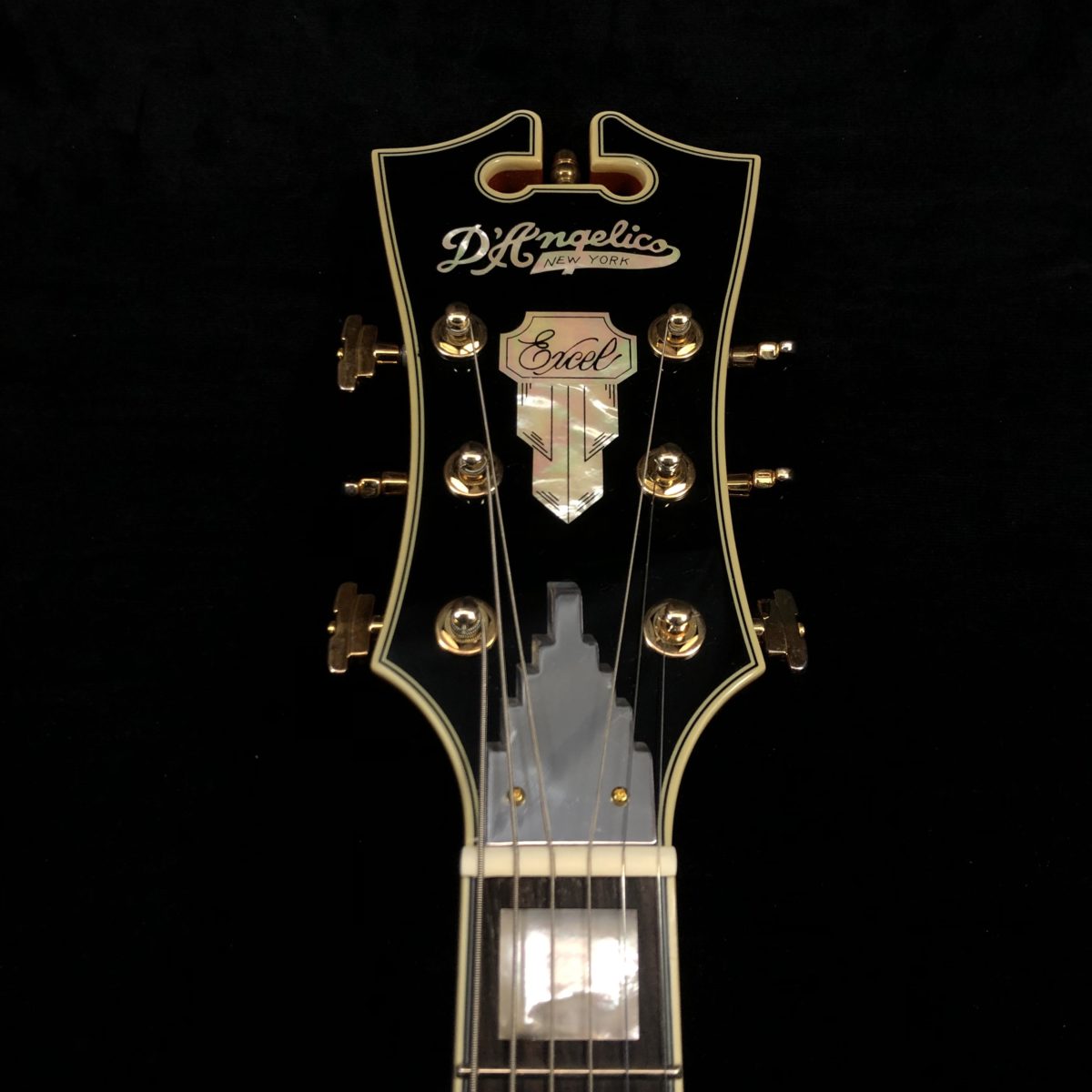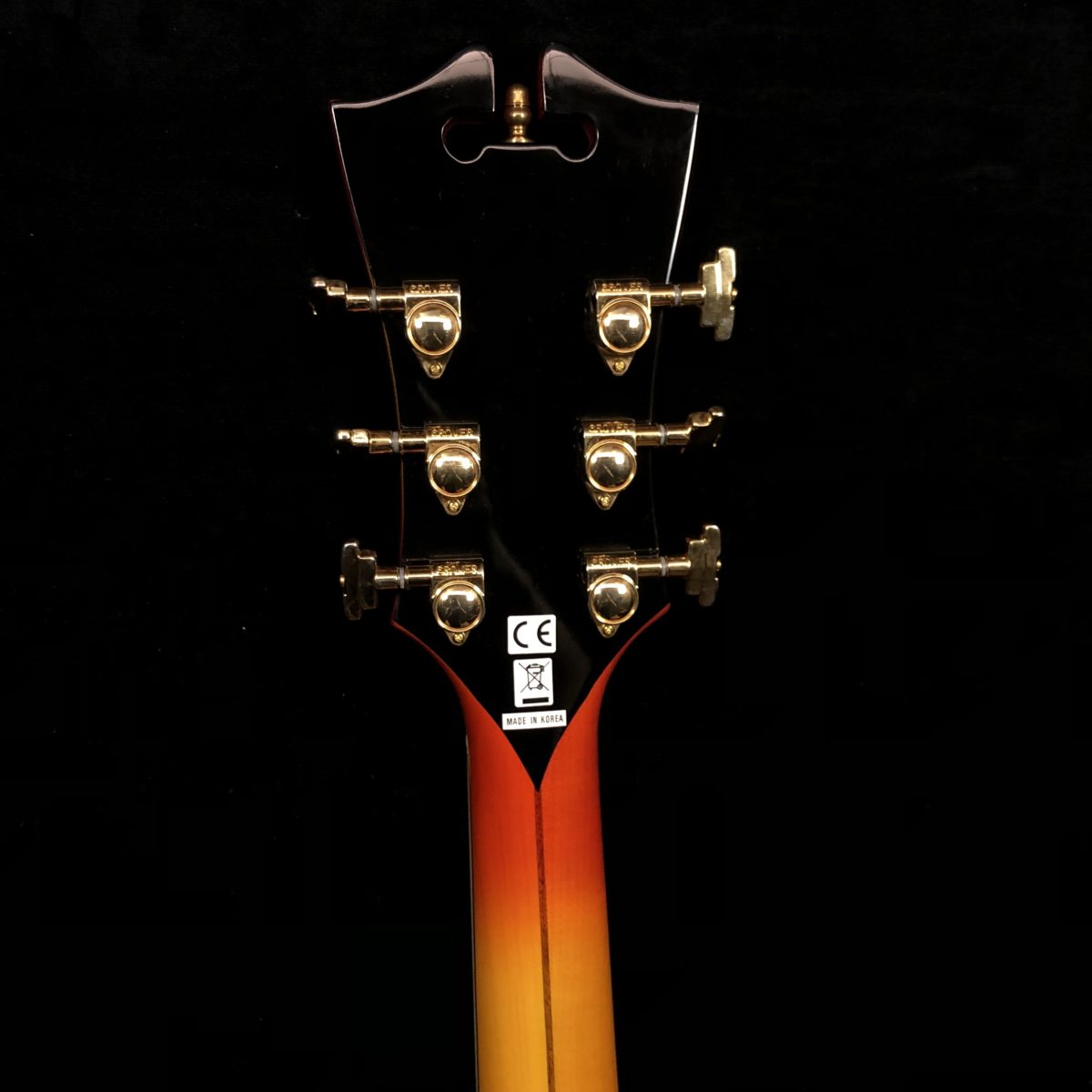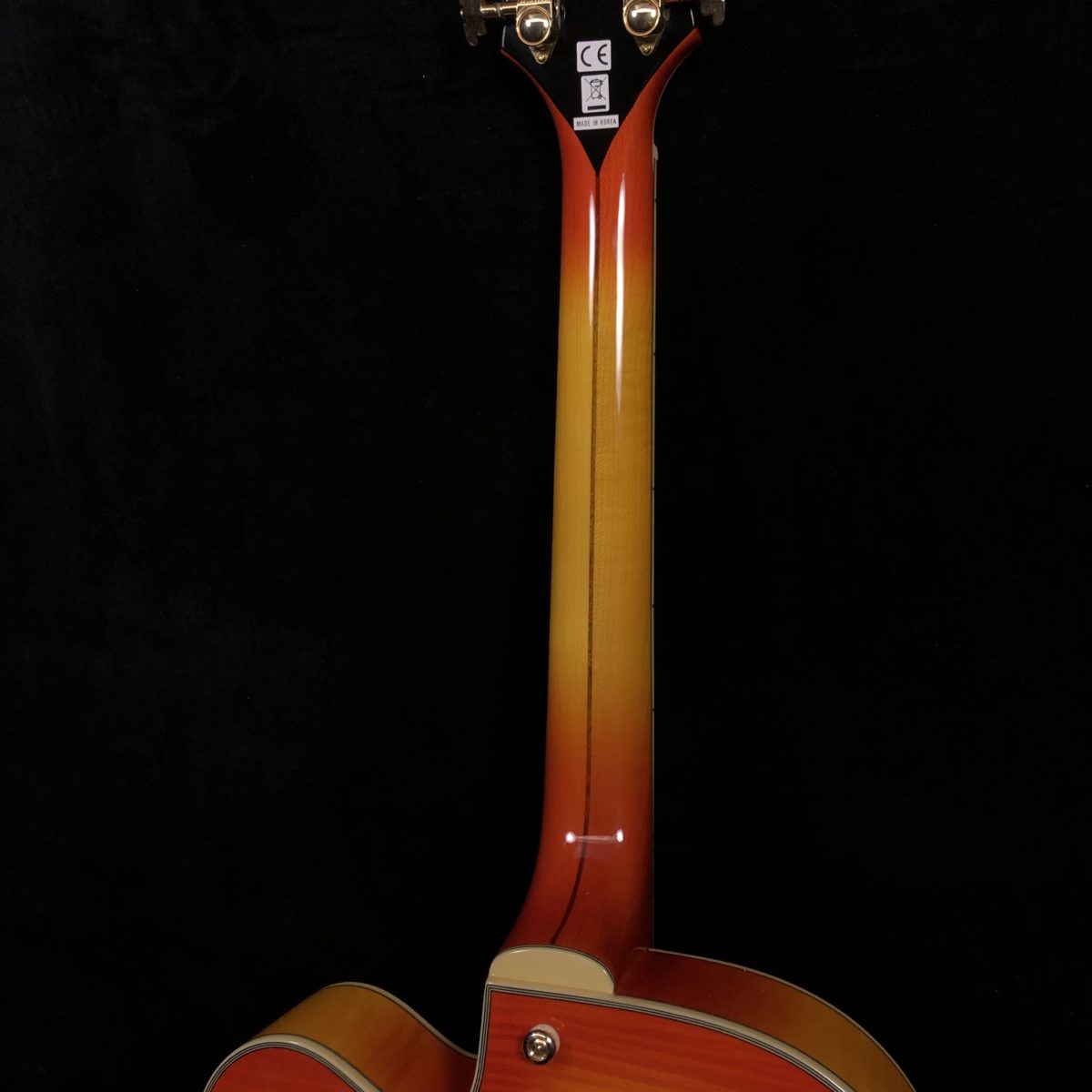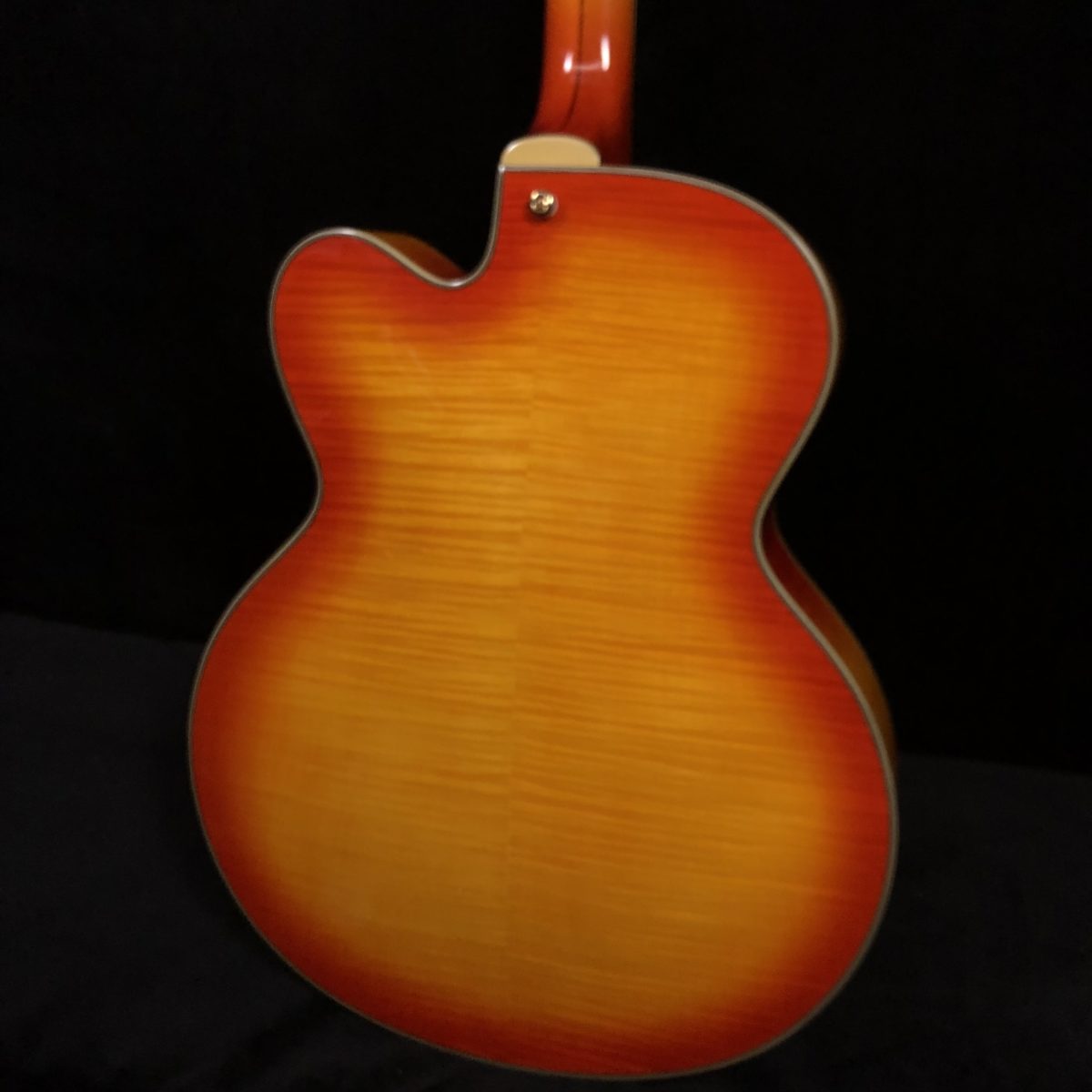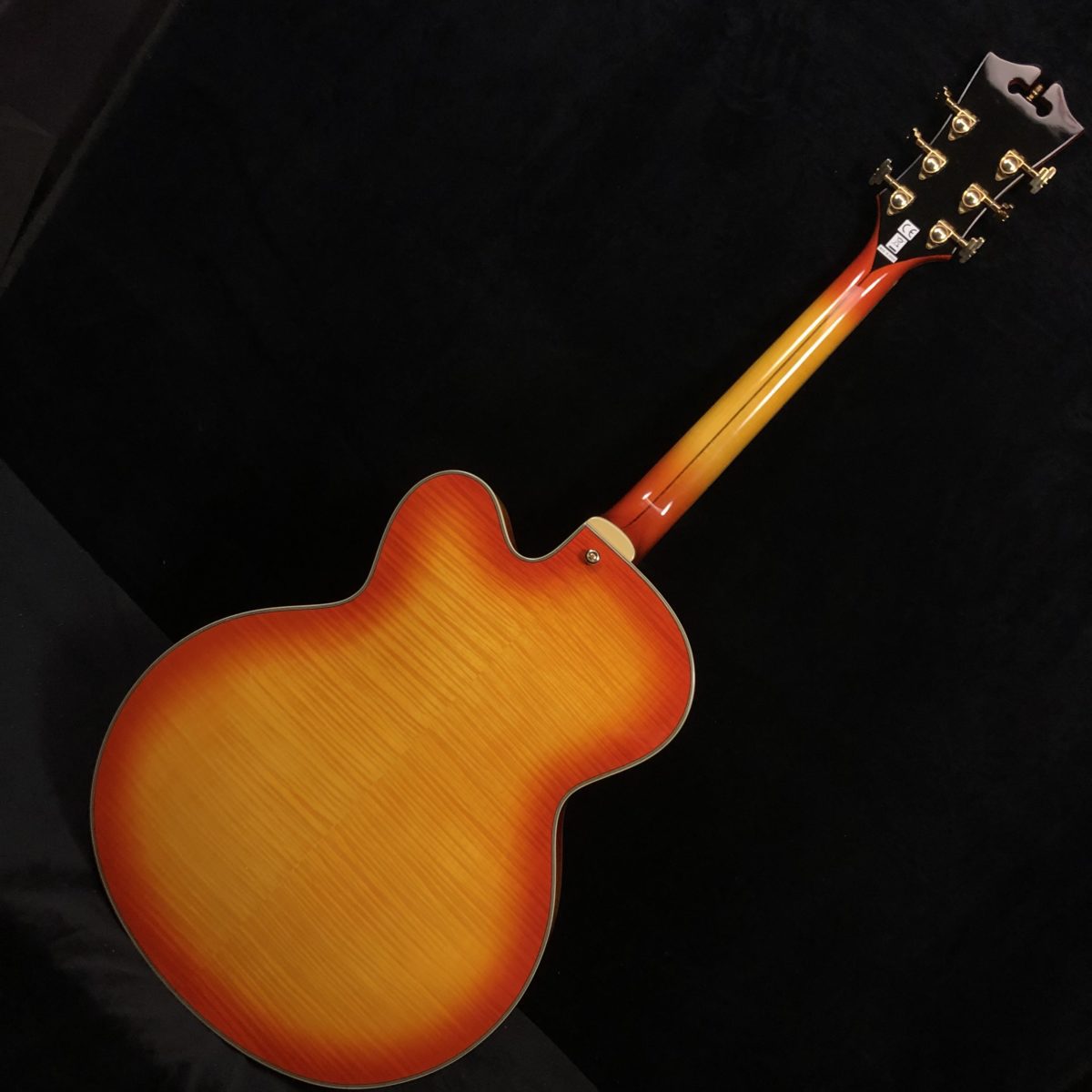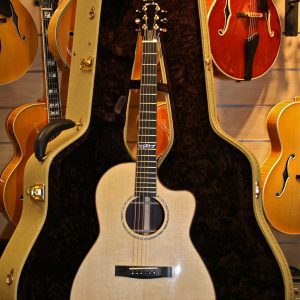Product Description
The single-cutaway fully hollowbody EX-59 is 3″ deep. The top, back, and sides are all made from laminated maple, and on the back and top, a book-matched outer ply features impressive curly figuring. The maple neck incorporates a walnut center stripe for strength and stability, and the handsome fretboard and bridge are made of dark rosewood.
The EX-59 is impeccably built. The 22 jumbo frets set along the 25.5″ scale neck are smoothly crowned and polished, the nut is perfectly notched, and so are the saddles on the bridge. The lovely faded cherry sunburst pattern smartly complements the gold hardware, and the finish, if just a little thick, is rubbed to a flawless gloss. The f-holes are smoothly shaped and bound, and the inlay work looks immaculate. (For D’Angelico purists it might be a little too perfect—the originals have a lot of “charming” design anomalies.)
Excellent Playability and Sound
At nearly eight pounds, this 17″-wide hollowbody is a beast of a guitar. But with its medium-sized C shape neck and jumbo frets, it plays exceptionally well—even better than most of the original examples I’ve tried. The neck is very comfortable in all regions, and the factory-set perfect low action makes it easy to play speedy bebop lines and chord melodies alike. From the open position to the 22nd fret, all the notes ring true and clear with perfect intonation, and there isn’t a single dead spot on the fretboard. The unplugged EX-59 has a lovely woody sound and sustains surprisingly well, given all the hardware mounted to the top. Plugged into a little tube amp like a Fender Blues Junior, the guitar really shines. The pickups, which have a bit more output than the Franz units used on the original D’Angelico (and on many Guild guitars), sound full and detailed. They also cover much wider stylistic territory than the floating neck-position pickup you’ll find on a lot of vintage-inspired archtops.
When the neck pickup alone is activated with the tone control dialed back, it’s easy to get warm, amber tones like Jim Hall’s. Single-note lines have tremendous presence, and chords sound thick, well defined, and full of individual note detail.
By contrast, the bridge pickup has an articulate bite that works well for country picking—and Western swing in particular. With a hint of grit dialed in on the amp, the bridge pickup lends itself perfectly to rockabilly and other roots-rock styles. Add a touch more gain and the EX-59 delivers the goods for rockin’ rhythm work, though at high volume levels it’s a touch susceptible to feedback. Even slide sounds terrific with the guitar tuned to open G—especially with both pickups selected and a hint of warm overdrive dialed in on the amp.
